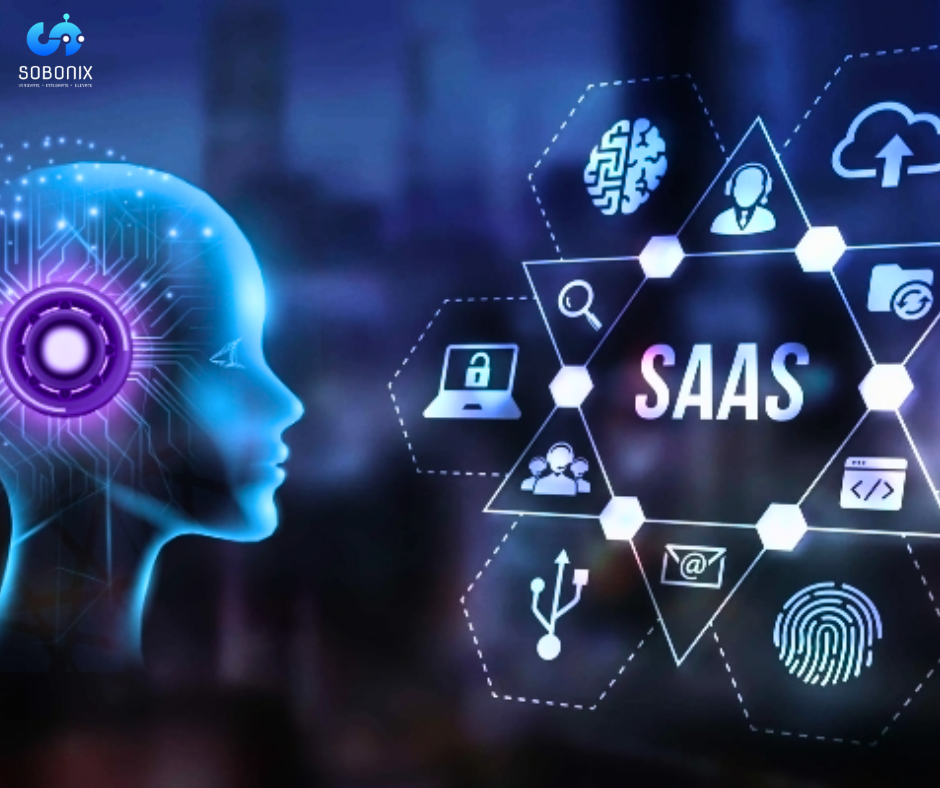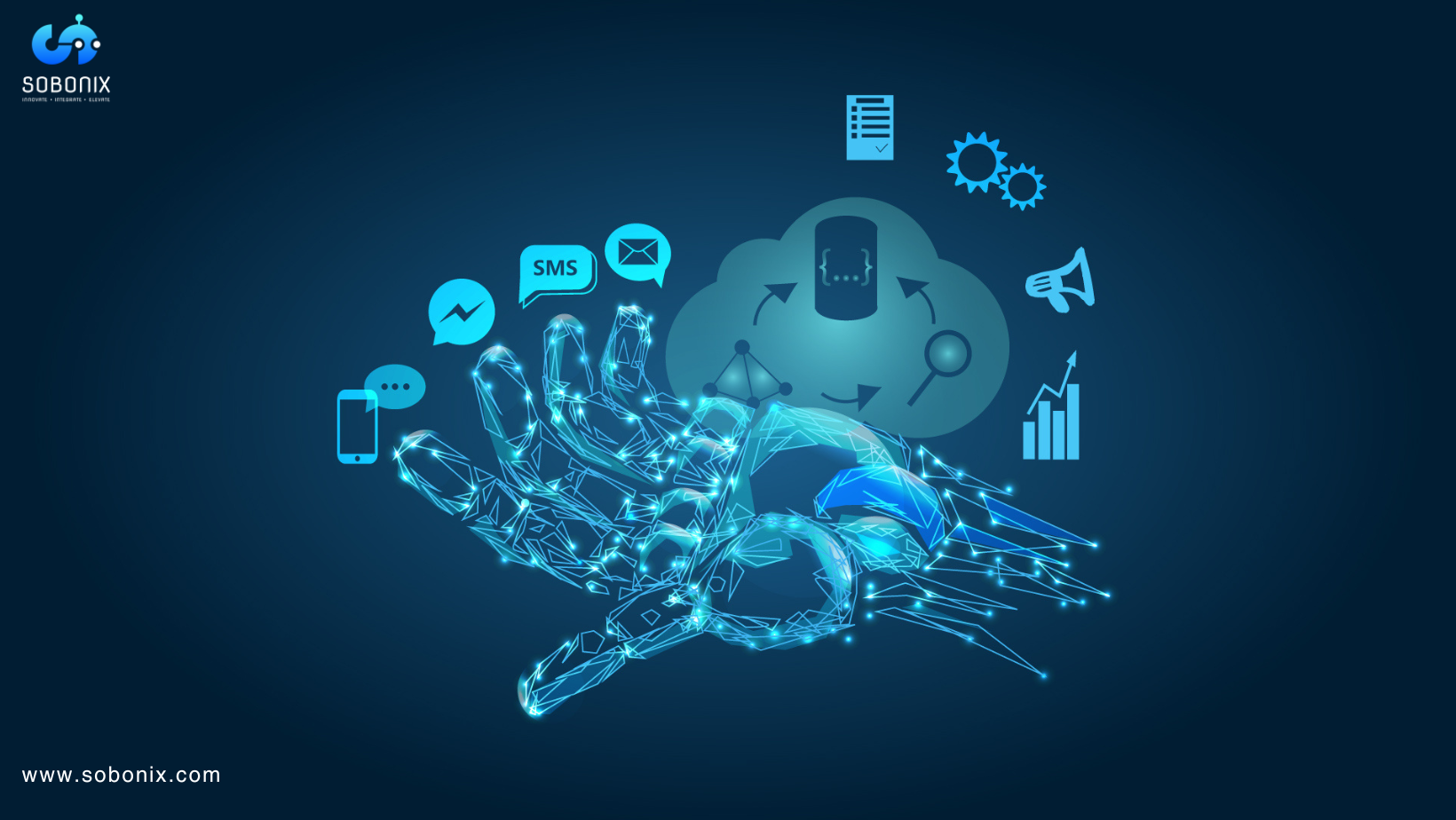AI-Powered Solutions for Custom SaaS & Web Development – 2025 Guide
Discover AI-powered solutions for custom SaaS and web development with Sobonix. Build scalable, intelligent, and future-ready digital products for your business.

So, you’ve probably heard that AI in SaaS product development is changing the way businesses build, scale, and deliver digital platforms.
Are you considering integrating AI into your SaaS product or web application?
Well, you can’t just bolt on an AI feature and call it a day if you answered “yes” to that. With customer expectations sky-high and competition heating up, finding the right strategy to leverage AI is where most businesses stumble.
That’s why we’re breaking it down for you in simple terms—what AI really brings to SaaS, how AI-powered web application development works in practice, and the kind of business value you can actually expect. By the end, you’ll see why forward-thinking enterprises are treating AI as a foundational layer, not a fancy add-on.
In fact, Gartner projects that by 2026, 40% of enterprise applications will feature task-specific AI agents—up from less than 5% today. This shift signals a leap from smart assistants to autonomous AI-driven workflows. Let’s dig in.
AI in SaaS & Web Development
Artificial intelligence presents a wide range of opportunities for SaaS and web platforms. However, the real value comes when AI is not treated as a separate feature but as a core part of product development.
For SaaS, AI can assist with:
- Automation of workflows – Instead of users setting up complex rules, the system can learn preferences and automatically handle repetitive tasks.
- Smarter decision-making – By analyzing user data, AI can suggest next steps or highlight areas of concern.
- Personalized user experience – Think about dashboards or portals that adjust based on the needs of each user.
In web development, the applications look slightly different but are equally impactful. Developers use AI for:
- Content management – AI can recommend layouts or generate variations of content that suit user intent.
- Testing and quality assurance – Automated systems can identify bugs faster and even suggest fixes.
- Security monitoring – Predictive models can flag unusual activities and reduce risks before they escalate.
The benefit of combining AI with these domains is that businesses gain a forward-thinking approach without needing to rebuild entire systems. Instead, AI slides into existing workflows, strengthening what already works while adding new capabilities.

Why Businesses Are Leaning on AI
One reason companies are investing more in AI within SaaS and web development is the demand for speed. Customers do not want to wait for weeks just to see updates or fixes. They expect seamless improvements, and AI helps deliver that pace.
Another factor is efficiency. AI reduces human error in tasks like data entry, testing, or security checks. That saves time for teams and improves reliability for users. For many businesses, this balance between speed and quality is what makes AI adoption attractive.
And of course, there’s scalability. SaaS companies in particular face the challenge of growing their user base without multiplying their costs. AI helps here by automating the heavy lifting—whether that’s handling support tickets, optimizing server usage, or predicting system loads.
Examples of AI in Action
To make this more practical, consider a customer relationship management (CRM) SaaS product. Traditionally, teams had to manually log leads, score them, and track follow-ups. With AI in SaaS product development, the CRM can now score leads automatically based on behavior, recommend the best times to follow up, and even draft personalized messages.
On the web development side, imagine an e-commerce site. Instead of showing the same homepage to every visitor, AI-powered systems can adjust the layout and product suggestions based on browsing history. As a result, customers feel like the site is tailored to them, which often leads to higher sales.
These examples may sound small, but when applied across entire businesses, they add up to major differences in customer engagement and operational efficiency.
Challenges to Keep in Mind
Although the opportunities are strong, adopting AI is not without its hurdles. Some of the common challenges include:
- Data quality – AI systems rely on clean and structured data. If businesses feed them poor data, the outcomes will not be reliable.
- Integration issues – Not every existing SaaS or web platform can adopt AI features smoothly. Planning and customization are often required.
- Cost concerns – While AI saves money in the long run, the upfront investment for integration and training can feel heavy for smaller businesses.
These challenges don’t mean AI should be avoided. They just highlight that businesses need the right guidance and partners when moving into AI-powered solutions.
Choosing the Right Technology Partner
This is where a custom SaaS development company makes a difference. Instead of trying to force AI into a product without clear direction, businesses can work with teams that specialize in building AI-driven features from the ground up. These partners understand both the technical requirements and the business goals, ensuring that AI serves a real purpose.
For instance, rather than offering generic automation, a custom SaaS development company can design AI features specific to industries like healthcare, finance, or retail. That means businesses do not just get a “smart” tool—they get one that understands their challenges and speaks their language.
The Future of AI in SaaS and Web
Looking ahead, AI is expected to become an everyday layer of SaaS and web platforms. Predictive analytics will support businesses in planning, voice-based interfaces will improve accessibility, and automation will take on even more complex workflows.

More importantly, businesses will not need to think of AI as a separate investment. It will simply be part of how software is built and delivered. That natural shift is already visible in many industries where AI is quietly handling processes behind the scenes.
Conclusion
The role of AI in SaaS product development is becoming too important to ignore. From automating repetitive tasks to delivering smarter, data-driven experiences, AI is changing how businesses create and maintain software. Web platforms are also benefiting, especially in areas like testing, personalization, and security.
For companies exploring digital transformation, the smartest step is to work with a custom web & SaaS development company that understands AI’s role in real business contexts. With the right approach, AI-powered web application development can provide not only efficiency but also a better connection with customers and a stronger competitive edge.
Want to explore what AI can do for your SaaS or web platform?
Book a quick strategy call with our experts and see how we can help you build AI-driven products that actually deliver results.
FAQs
Q. How much does it cost to add AI to a SaaS product?
A. The cost of AI integration varies widely depending on scope:
- Basic AI features (chatbots, workflow automation): $15,000 – $30,000
- Mid-level AI (recommendation engines, predictive analytics): $30,000 – $80,000
- Advanced AI solutions (natural language processing, large-scale personalization): $80,000 – $150,000+
Costs are influenced by data preparation, integration with existing systems, industry compliance (like HIPAA for healthcare or PCI DSS for finance), and the size of the development team. Partnering with an experienced SaaS development company ensures you invest in features that actually deliver ROI.
Q. How long does AI integration usually take?
A. Timelines depend on complexity and scope:
- Basic AI features: 4–6 weeks
- Mid-level AI modules: 2–3 months
- Enterprise-grade AI solutions: 4–6 months or longer
Factors like data availability, system readiness, and customization requirements play a big role. Many companies choose phased rollouts—starting with quick wins like automation, then gradually adding predictive analytics and advanced personalization.